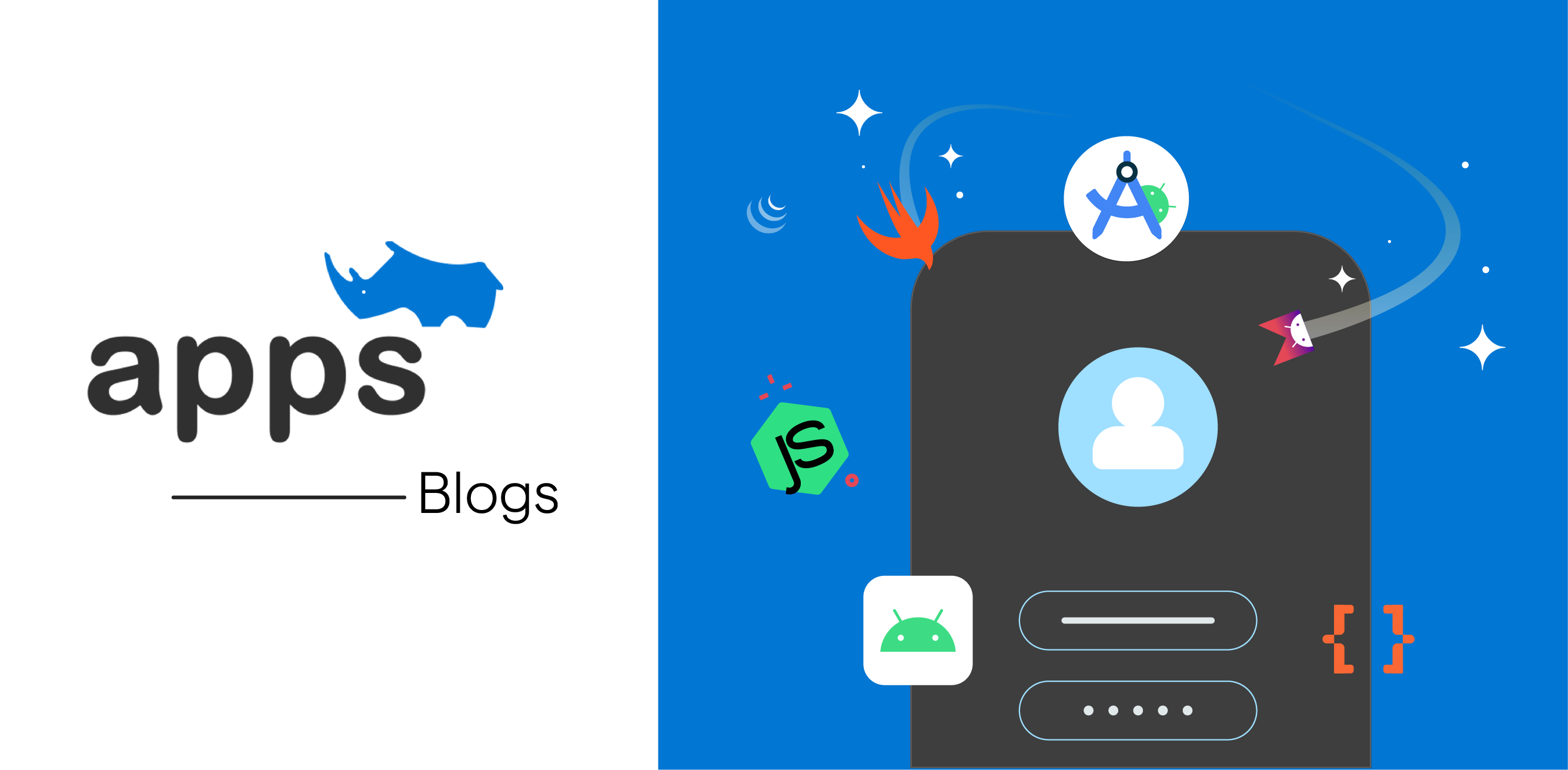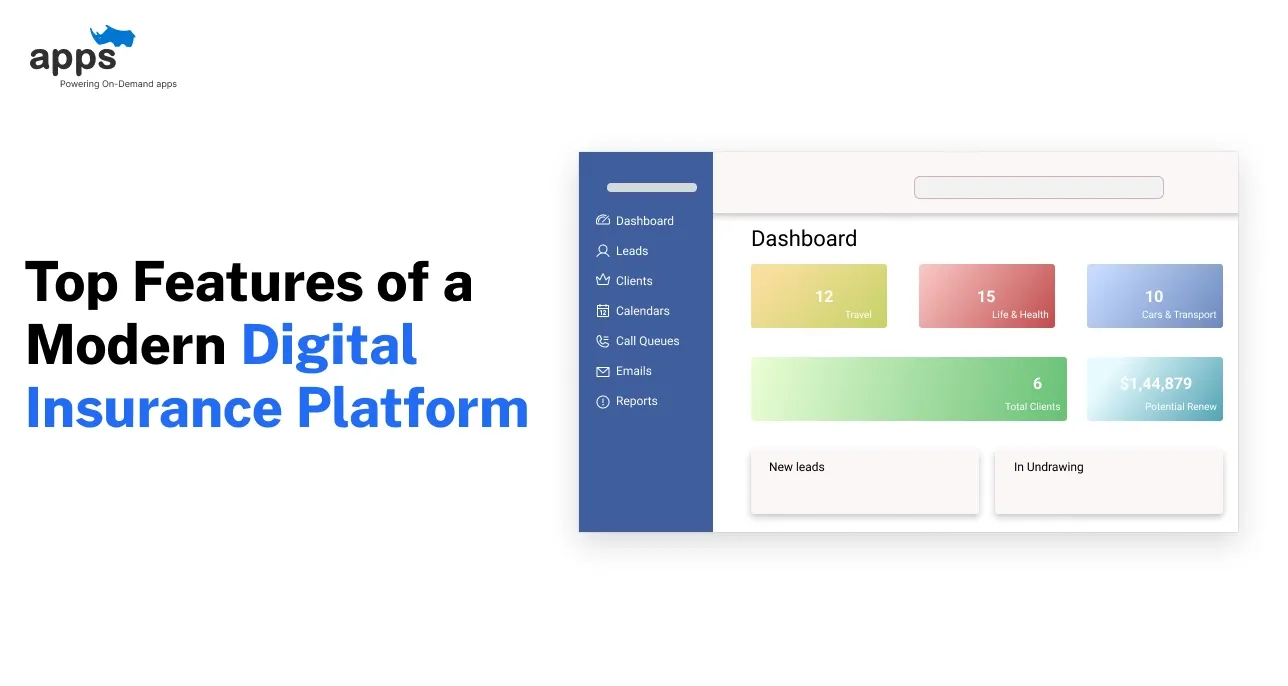- What is a Mobile App?
- The Evolution of Mobile Apps: A Timeline from 1994 to Today
- Top Trend In Mobile Apps In 2025:
- Uses of Mobile Apps Industry-wise: AI Trends and Applications in 2025
- Platform and Technologies in Mobile App Development
- How AppsRhino Helps in Mobile App Development?
- Conclusion:
- Frequently Asked Questions(FAQs)
Table of Contents
The Evolution of Mobile Apps: 1994 to 2025

Mobile apps have become an essential part of daily life, changing how we communicate, work, and shop.
The journey began in 1994 with IBM Simon, the first smartphone that combined basic apps like calendar and email with phone features, setting the foundation for today’s mobile technology.
Fast forward to 2025, mobile apps now use AI, cloud computing, and real-time data to offer personalized experiences across industries.
This article explores how mobile apps have evolved over the years, marking critical innovations that have shaped the connected world we live in today.
What is a Mobile App?
A mobile app is software designed specifically to run on smartphones, tablets, or wearable devices. It enables users to perform tasks, access services, or play games directly on their mobile devices. Apps can be native (built for specific platforms like iOS or Android), web-based (accessed through browsers), or hybrid (combining both technologies).
They offer user-friendly interfaces, quick access to features, and often include functions like messaging, payments, navigation, and more. Mobile apps are downloaded from app stores and have become essential tools for communication, entertainment, productivity, and business in everyday life.
The Evolution of Mobile Apps: A Timeline from 1994 to Today
| Year | Key Event / Evolution |
|---|---|
| 1994 | IBM launches Simon, the first smartphone with basic apps like calendar, email, and fax |
| 1997 | Nokia introduces the game "Snake," one of the first popular mobile apps |
| 2007 | Apple releases the iPhone, revolutionizing the mobile app ecosystem |
| 2008 | Apple opens the App Store with 500+ apps; Google launches Android Market (Google Play) |
| 2010 | Apple introduces iPad with thousands of apps optimized for tablets |
| 2011 | Android and iOS app downloads surpass 10 billion collectively |
| 2013 | Over 50 billion app downloads worldwide across major platforms |
| 2017 | App stores list millions of apps offering diverse functionalities |
| 2025 | Mobile apps integrate AI, telemedicine, cloud tech, augmented reality, becoming integral to everyday life |
Top Trend In Mobile Apps In 2025:
Customized mobile apps:
Customized mobile apps have been providing a better user experience. Companies like Amazon, Alibaba, and Flipkart increase sales and mobile user experience through their mobile apps. In addition, industries like healthcare, insurance, e-commerce, food delivery, laundry, and taxi services want their mobile apps to generate revenue. By the end of 2025, several.
M-commerce transactions:
M-commerce are expected to surpass the no. of E-commerce. Online payment apps like Google Pay and Apple Pay are also expected to increase by 30%. The M-Commerce industry is benefiting from mobile apps more than ever.
AR and VR:
AR & VR have revolutionized the app development industry. Augmented reality has set various trends in health, engineering, real estate, retail, etc. Like AR, Virtual Reality is another revolutionary innovation used to create virtual scenarios that are difficult to create otherwise. For example, People can recreate their look through such apps and make the right decisions before buying.
Artificial Intelligence:
AI is the new-age application that makes human life more comfortable by performing everyday tasks through its intelligence capabilities. There are many innovative AI apps in the market. For example, Duolingo is a mobile app where users can effortlessly learn any foreign or native language without additional effort or professional classes.
Internet of things:
is a network of interconnected smart devices. It involves many other smart devices with individual circuits, sensors, and software built into them. The wearable industry, including smartwatches, fitness trackers, or wearable headsets, is another trendsetter in the industry.
Uses of Mobile Apps Industry-wise: AI Trends and Applications in 2025
Here is an industry-wise list of mobile app uses:
- Healthcare: Telemedicine, patient monitoring, appointment scheduling, health tracking
- Retail & E-commerce: Online shopping, payment processing, personalised offers
- Finance & Banking: Mobile banking, investment tracking, contactless payments
- Education: E-learning platforms, virtual classrooms, study aids
- Travel & Hospitality: Booking engines, navigation, real-time updates
- Entertainment: Streaming videos/music, gaming, social media
- Logistics & Transportation: Fleet tracking, route optimization, delivery management
- Manufacturing: Equipment monitoring, inventory management, remote troubleshooting
- Real Estate: Property listings, virtual tours, client management
- Food & Beverage: Online ordering, delivery tracking, loyalty programs
Mobile apps tailor experiences and services to industry needs, driving convenience, productivity, and customer engagement in 2025 and beyond.
Platform and Technologies in Mobile App Development
Mobile apps are built on different platforms, using various technologies to ensure they work smoothly and meet user needs.
Platforms:
- iOS: Apps for Apple devices are usually built with Swift or Objective-C using Xcode.
- Android: Apps for Android devices are primarily created with Java or Kotlin using Android Studio.
- Cross-Platform: Tools like React Native, Flutter, and Xamarin let developers write one codebase that runs on both iOS and Android, saving time and effort.
- Web Apps: Progressive Web Apps (PWAs) are websites that behave like apps, accessible via browsers without installation.
Technologies & Tools:
- Programming languages include Swift, Java, Kotlin, JavaScript, and Dart.
- Backends are built with Node.js, Django, Ruby on Rails, or similar frameworks.
- Databases like Firebase, MongoDB, or PostgreSQL store data.
- APIs and SDKs help integrate payments, maps, push notifications, and AI features.
- Cloud services such as AWS and Google Cloud provide hosting and scalability.
Choosing the right platform and technology depends on your app's goals, budget, and target audience. Native apps offer top performance, while cross-platform solutions balance cost and speed.
How AppsRhino Helps in Mobile App Development?
AppsRhino is a trusted name in custom mobile app development, offering tailored solutions that help businesses launch fast and scale smoothly.
Their expertise ensures apps are scalable, secure, and packed with the right features, backed by ongoing support.
Core Mobile App Development Services from AppsRhino:
- Custom Mobile App Development
- Cross-Platform App Development
- Telemedicine & Healthcare Apps
- On-Demand Delivery Solutions
- Payment Gateway Integration
- 24x7 Support & Maintenance
Conclusion:
The evolution of mobile apps has been driven by continuous innovation, from the early days of basic multifunctional devices like IBM Simon to today’s AI-powered intelligent applications. As technology advances, mobile apps are becoming more personalized, efficient, and deeply integrated into every aspect of our daily lives.
Looking ahead, trends like AI, 5G connectivity, and immersive AR experiences will shape the next chapter of mobile app development, making apps smarter and more intuitive than ever.
Businesses that embrace these technologies will unlock new opportunities to engage users and streamline operations, ensuring mobile apps remain at the heart of digital transformation in 2025 and beyond.
Frequently Asked Questions(FAQs)
How did the evolution of mobile applications begin?
Mobile apps evolved from early multifunctional devices; IBM Simon in 1994 combined phone and PDA features, paving the way for modern smartphones and app ecosystems.
Which was the first mobile app?
The IBM Simon’s was the first mobile app ever built-in apps like calendar, calculator, contact book, email, and sketchpad were the first mobile applications available on a smartphone in 1994.
How many types of mobile apps are there?
Main mobile app types include native (platform-specific), web apps (browser-based), cross-platform apps (hybrid), and progressive web apps (PWAs) accessible offline and via browsers.
How is a mobile app created?
Mobile apps are created through stages: idea, design, coding (native or cross-platform), testing, deployment on app stores, and continuous updates and maintenance.
What is the full form of AI in a mobile app?
AI in mobile apps stands for Artificial Intelligence, enabling smart features like data personalization, voice recognition, predictive analytics, and automation within applications.
Table of Contents
- What is a Mobile App?
- The Evolution of Mobile Apps: A Timeline from 1994 to Today
- Top Trend In Mobile Apps In 2025:
- Uses of Mobile Apps Industry-wise: AI Trends and Applications in 2025
- Platform and Technologies in Mobile App Development
- How AppsRhino Helps in Mobile App Development?
- Conclusion:
- Frequently Asked Questions(FAQs)


